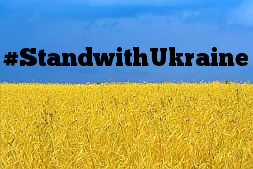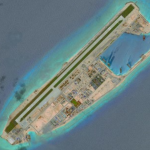Second track diplomacy could calm Asia’s power struggles

The first priority is to manage great power competition in the Indo‑Pacific. – Australia’s Defence Minister Christopher Pyne
Optimists see the glass as half full, while strategists worry that it’s actually a coffin that’s half full.
Confronting our new era of great-power competition, optimists think that smarts and self-interest will achieve a balanced mix of intense competition and intimate cooperation. The pessimists see the coffin of great-power clash already in the front parlour.
As an optimist, I’m pushing the idea that this will be a hot peace not a new cold war.
I got a partial tick in Canberra last week from our second-longest-serving prime minister, John Howard, just back from leading the Australian delegation in Beijing for the high-level dialogue with China.
Howard responded to my cold war/hot peace question: ‘I think talk of a new cold war is overblown. I think we have to adopt a pragmatic assessment of relations between China and the United States.’
The Howard recipe for pragmatic management is not to twitch at every tweet by Donald Trump, and push hard to preserve the open economic settings that have delivered so much for Asia and Australia:
China and America are the dominant powers in the world. And how they interact has a big impact. And I, certainly, speaking as an Australian, don’t want a return to higher levels of protection and trade restriction. I’m totally against that. The debate between Xi and President Trump, I hope in the long term doesn’t make the world a more protected place when it comes to trade.
With the first track of government-to-government dealings becoming tougher, there’s more need for work via track 2 to understand and balance the hot peace.
For second-track heavy lifting, turn to CSCAP, the Council for Security Cooperation in the Asia Pacific, established in 1992 in Asia’s great burst of optimistic regionalism and institution creation following the end of the cold war.
I’ve been a CSCAPer since the wonderful insurgent intellectual Des Ball conscripted me, opining that even journalists should lend a hand in the long second-track trek.
CSCAP has been pondering our new era and the management theme Australia is pushing: the need for a rules-based order in Canberra’s geographic construct of choice, the Indo-Pacific.
The council’s published view is in the Regional security outlook 2019 and the latest round of debate happened in Perth at the 50th meeting of the CSCAP steering committee. Those offering Oz perspectives in Perth included Kim Beazley, Julie Bishop and Stephen Smith.
Some regional commentators see opportunities as well as threats in this increasingly stark competition. Southeast Asian countries may benefit if foreign companies move their production from China to their region.
Major-power rivalry, in the view of key Vietnamese analysts (writing in CSCAP’s Regional security outlook), ‘creates more room for manoeuvre’ for Southeast Asians as Washington and Beijing strive to win partnerships and collaboration.
Bilahari Kausikan from Singapore makes the point that the world—at the end of the period of US unipolarity—is in ‘a more historically normal situation of a divided global and regional order and great power competition’.
There’s concern—not just from China, but also Russia and much of ASEAN—that advocacy of the ‘Indo-Pacific’ is antagonistic towards China.
The Vietnam essay portrays Washington’s ‘Indo-Pacific Strategy (IPS)’ and China’s ‘Belt and Road Initiative’ as rival visions, representing ‘intensified engagement with the wider region in terms of economic[s], politics, diplomacy, and defence’.
The IPS is ‘centred on the concept of the Quad’ (which is intended to bring together four democracies—the United States, Japan, India and Australia) and ‘may sideline ASEAN-led arrangements that prioritise … a more comprehensive approach to security’.
As ever, ASEAN is anxious about forging alliance-style alignments. The ‘DNA of ASEAN countries’, according to a senior Indonesian writer in CSCAP’s Regional security outlook, is for ‘inclusive cooperation’ to maintain ‘equal distance from all the great powers’ to prevent the region from ‘becoming a theatre of proxy war’.
Australia views the ‘Indo-Pacific’ as primarily a geographic framing device, giving proper recognition to India’s rise. However, CSCAP commentary is a reminder that the concept carries other, more controversial significance for many in the region.
The notion of an international ‘rules-based order’ is also less straightforward than Australian official statements and academic commentary sometimes suggest. True, there’s support for the idea of ‘rules’ in international behaviour—but reference to a ‘liberal’ order is more contested. Also, the insistence that alliances are a part of this order—as some Australian leaders have done—fits uncomfortably with ASEAN international preferences.
The Australian academic Anthony Milner, currently a co-chair of CSCAP, says the region confronts the implications of a great transition in global power:
Most observers instinctively sense that moving to a new order is a fearsomely daunting undertaking, especially as we are not coming out of a major war with a clear winner who has the muscle and the moral authority to offer new solutions.
Henry Kissinger has argued that the future international order will involve not just a shift in power from the US to China but also a new ‘agreement on norms’—and he is uncertain whether it will be ‘possible to translate divergent cultures into a common system’.
An understandably popular stance is to keep it simple, staying clear of ideology and focusing initially on trade and investment regimes. But even here, divergent philosophies of governance darken the horizon almost instantly.
More than being simply pragmatic, Australia must be nimble and smart as it adheres to the US alliance while simultaneously leaning towards Asia on economic and trade issues. It’ll be a complicated trek, on first or second track.
This article was published by The Strategist.

Graeme Dobell has been reporting on Australian and international politics, foreign affairs and defence, and the Asia Pacific since 1975. He is Journalist Fellow at the Australian Strategic Policy Institute.












